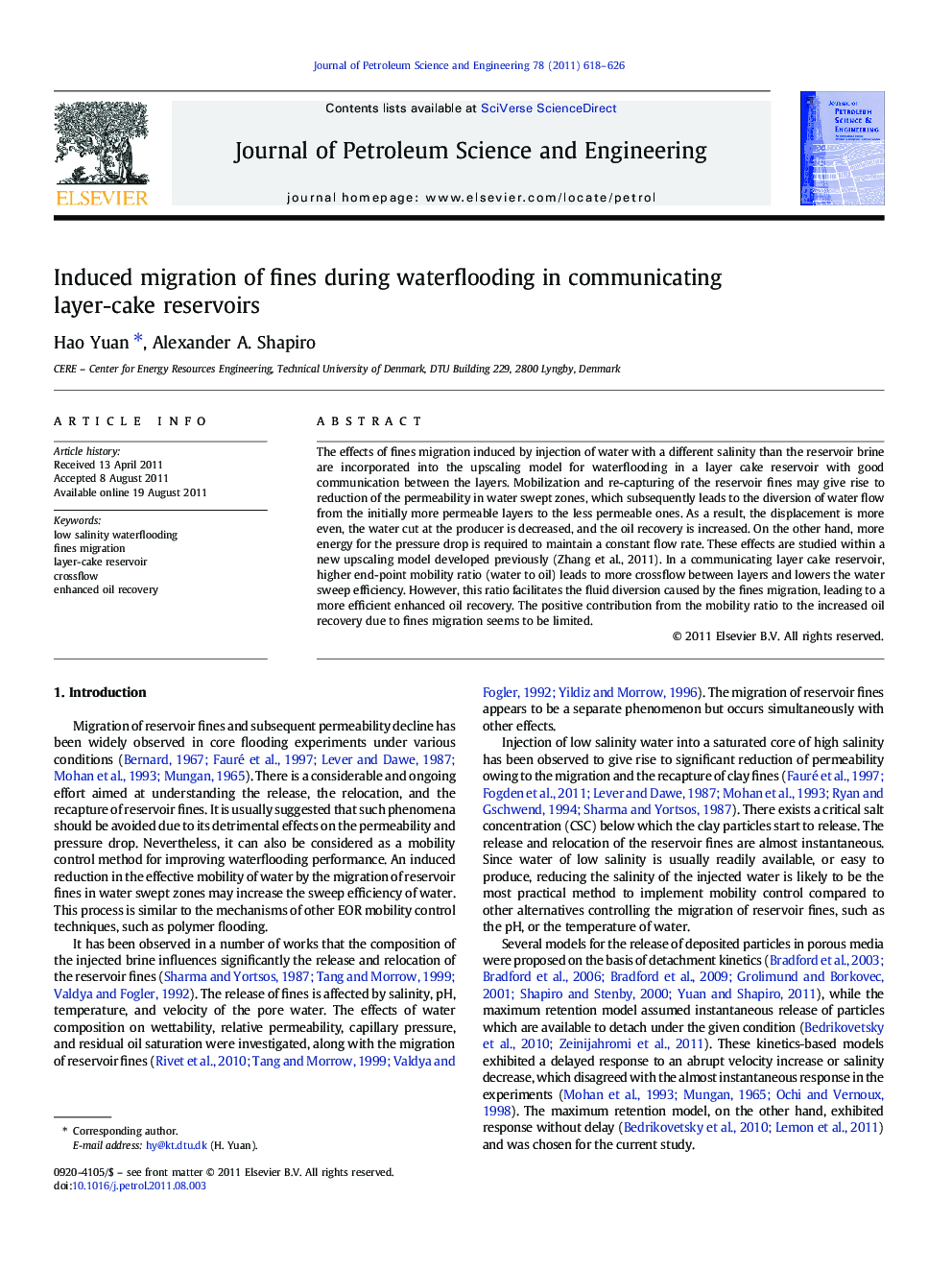| Article ID | Journal | Published Year | Pages | File Type |
|---|---|---|---|---|
| 1755670 | Journal of Petroleum Science and Engineering | 2011 | 9 Pages |
The effects of fines migration induced by injection of water with a different salinity than the reservoir brine are incorporated into the upscaling model for waterflooding in a layer cake reservoir with good communication between the layers. Mobilization and re-capturing of the reservoir fines may give rise to reduction of the permeability in water swept zones, which subsequently leads to the diversion of water flow from the initially more permeable layers to the less permeable ones. As a result, the displacement is more even, the water cut at the producer is decreased, and the oil recovery is increased. On the other hand, more energy for the pressure drop is required to maintain a constant flow rate. These effects are studied within a new upscaling model developed previously (Zhang et al., 2011). In a communicating layer cake reservoir, higher end-point mobility ratio (water to oil) leads to more crossflow between layers and lowers the water sweep efficiency. However, this ratio facilitates the fluid diversion caused by the fines migration, leading to a more efficient enhanced oil recovery. The positive contribution from the mobility ratio to the increased oil recovery due to fines migration seems to be limited.
► Fines migration is considered during waterflooding in a layer cake reservoir. ► It reduces permeability in water-swept zones and diverts water to unswept zones. ► Water breakthrough is delayed and oil recovery is increased. ► More energy for pressure drop is required to maintain a constant flow rate. ► High water-oil mobility ratio facilitates fluid diversion due to fines migration.
